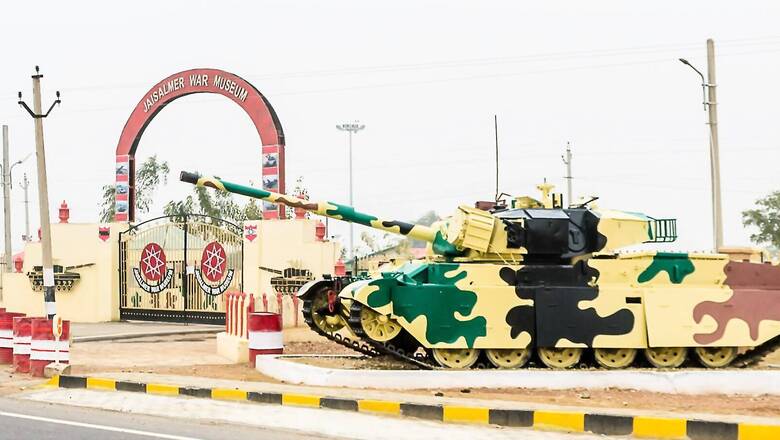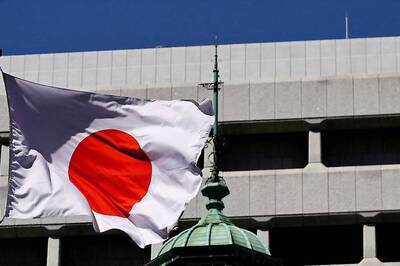
views
Lt Gen Shamsher Mehta, a participant in the dash to Dacca as he and his squadron of PT-76 tanks floated across the Meghna river, offered some prescient comments to the author in an interview years ago on how he looked at the ‘big picture’ of India’s politico-military intervention in East Pakistan.
He said, “Never in modern times has a nation-state orchestrated the creation of another nation-state through military intervention and completely exited the new nation within four months of its creation without attempting to shape or influence its future political trajectory.”
Adding to this, he remarked in a lighter vein, “Never also has a victor taken 93,000 prisoners, housed them in shelters belonging to their own troops, fed them to the extent that many of them returned home with a gain in weight and extracted nothing from the defeated nation in terms of strategic or territorial concessions even when the latter was the principal bone of contention.” While the analogy offered above is a simplistic one, it reveals much about Indian strategic culture.
While India’s strategic restraint, altruism, respect for the Geneva convention, adherence to the principles of ‘Just War’ and absence of any hegemonic intent was commendable, its inability to engage in coercive diplomacy during the post-conflict phase also exposed serious chinks in the manner it conducted statecraft despite the propensity of India’s incumbent prime minister, Indira Gandhi, to successfully leverage the instrument of force several times in the few years she had been prime minister.
ALSO READ | 1971 India-Pakistan War: 50 Years and Counting, a Woman’s Wait for Her Husband & Closure
The years preceding the 1971 conflict witnessed the emergence of a Machiavellian and Kautilyan flavour to the accumulation of state power and influence. This was marked by political manipulation to seize power within the Congress in which prime minister Indira Gandhi emerged triumphantly; a decisive move to orchestrate the amalgamation of Sikkim into the Indian Union; a firm response to Chinese military aggression at Nathu La; a comprehensive push to build military capability; and lastly, an attempt to build international partnerships as part of a strategy of ‘hedging and balancing’.
What then is a reasonable scorecard for the 1971 India-Pakistan conflict? At the highest level of policymaking and the political direction of statecraft, prevention of war, preparation for war and the conduct of war, Indira Gandhi and her key ministers, bureaucrats and diplomats did all they could to prevent war.
While some historians have criticised the Government of India’s decision to delay the military campaign to the winter, they ignore the importance of ‘shaping the battlefield’ and the perils of going to war underprepared, which the Indian military was in April 1971. There has been much debate on who and what was responsible for India’s decision to delay the military intervention in East Pakistan. While there can be no doubt that the buck for apex decision-making in India during times of crises has always stopped at the prime minister, it is the jostling to take credit or apportioning blame for a victory or a mishap that can get quite obfuscated over the passage of time.
Diplomats, bureaucrats and political historians argue on the wings of what can be best termed as ‘reasonable’ primary evidence to further a narrative that suggests that Indira Gandhi had made up her mind to delay the military intervention based on multiple inputs from her cabinet and trusted principal advisors, PN Haksar, PN Dhar and DP Dhar.
Military historians like the author are convinced after multiple and well-triangulated interviews with credible practitioners involved in the military planning process that it was Sam Manekshaw’s firm answer to his prime minister about the inappropriate timing and the under-preparedness of India’s armed forces to undertake a decisive campaign in East Pakistan that convinced her to delay the military campaign.
A look at the timeline of activities clearly reveals that India’s diplomatic blitz and orchestration of the covert war commenced only after the April cabinet meeting when immediate military intervention was ruled out. In the final analysis, it was a whole-of-government approach that resulted in a finely sequenced military campaign that combined a ‘blitzkrieg’ like offensive in the East and an ‘offensive-defensive’ approach in the West that led to the final strategic outcome.
ALSO READ | How Mukti Bahini, Partly Inspired by Che Guevera, Turned into a Battle-ready Force in 1971
Among the several positive operational takeaways, the main ones were good planning and decisive leadership right down to the tactical level. The coming of age of the Indian Navy and the Indian Air Force resulted in out-of-the-box ideas that included innovative and never-attempted before air-land operations in the form of airborne and heli-landed operations; risking the newly acquired missile boats in a mission to hit targets at the edge of their radii of action; and daring to target the enemy’s leadership from the air in the centre of heavily-populated Dacca.
On the flip side, keeping to its past reputation of failing to capitalise on operational momentum, there were several examples in the western theatre where the military initiative was ceded after significant operational gains in the desert and Kargil sectors offered the potential for territorial gains.
Strategic fatigue is a natural fallout of war and conflict, more so in the case of large developing democracies like India. Jawaharlal Nehru’s outreach to the United Nations in 1948 even after having seized the operational advantage can be attributed to strategic fatigue and so was the sub-optimal extraction of concessions during the Simla Agreement.
India’s propensity to revert to a stove-pipe approach by not factoring in military inputs adequately during diplomatic negotiations has been an under-explored dimension of the Simla Agreement. Beyond a senior-ranking Army Commander, Lt Gen PS Bhagat, who was merely involved in formalising the cartographic orientation of the Line of Control (LoC), no senior Army commander was involved in the Simla negotiations.
Fifty years down the line, we seem to have learnt lessons in this area as after several decades of stove-piped negotiations with the Chinese that led nowhere, we finally realised that it made sense to include senior military officers in diplomatic negotiations, particularly in a highly securitised geopolitical environment, a situation that existed at the end of the conflict phase in 1971. Celebrate the Golden Jubilee of the Liberation of Bangladesh, but also step back to examine and study some of the strategic fault lines that lingered on!
The author is a military historian and the author of ‘India’s Wars’ and ‘Full Spectrum’. The views expressed in this article are those of the author and do not represent the stand of this publication.
Read all the Latest Opinions here




















Comments
0 comment